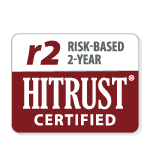As specialty benefit management organizations strive to mitigate costly medical claims while improving patients’ lives, turning to predictive analytics is the secret ingredient to success. An effective predictive analytics partner can, in fact, make a significant difference by helping organizations identify and engage high-risk individuals sooner.
Here’s more on how a clinically informed predictive analytics partner can help a specialty benefit management organization can add more value to clients—as well as the key capabilities to seek in a predictive solution.
1. Mitigate risk exposure up to 12 months prior to a claim.
An effective predictive analytics partner, powered by AI and machine learning, can help specialty benefit management organizations identify future at-risk and high-cost claimants. The most effective solutions can help identify these individuals 6 to 12 months before an event or diagnosis hits the claim, allowing your resources to increase engagement by 15%-20%. For example, that means better steerage to lower cost interventions and avoiding costly procedures like surgery in lieu of physical therapy.
2. Decrease avoidable utilization, especially emergent care.
By identifying at-risk individuals sooner, clinically focused predictive analytics can help specialty benefit management organizations decrease avoidable utilization. The best partners will do this by basing their predictive modeling on client-specific data sets rather than national data sets. Seek out a solution that has a proven ability to:
- Decrease avoidable ED visits by 15%
- Decrease avoidable admissions by 20%
- Decrease avoidable 30-day readmissions by 15%
3. Intervene sooner to increase lead time and value.
The ability to accurately target and engage at-risk individuals sooner generates lead time to steer action and prevent costly utilization. AI-powered predictive analytics are a critical component to succeeding in risk-based arrangements, helping to mitigate ED and OR visits in favor of primary care, physical therapy, or other preventive and maintenance programs.
4. Personalize outreach for the next best action.
Proactive outreach based on individuals’ comorbidities, rising risk, and future costs, along with engagement preferences has proven to decrease total cost of care an average of $150-$200 per engaged member per month. Look for explanations in predictive analytics that enable personalized engagement, which is proven to be more likely to steer members to the next best call to action.
5. Get ahead of the delayed-care curve.
Delayed care and sedentary lifestyles during the pandemic have magnified the need for care among individuals with and without chronic conditions. A recent study predicts increased utilization this year for musculoskeletal conditions at 22%, diabetes at nearly 18%, hypertension at 10%, and cardiovascular valvular disorder at more than 35%. Predictive analytics can pinpoint individuals who are already at risk or present increasing risk based on lifestyle, social determinants of health, and other drivers so your resources can intervene sooner.
6. Prioritize resources.
Seek an analytics partner that can show concrete examples of how it has moved the needle on improving cost, quality, outcomes, and experience. Effective models should be trained on specific data and produce curated outreach lists so you can better prioritize your resources’ time and increase their effectiveness.
7. Help your specialty benefit management organization pay for itself.
By prioritizing resources and enabling them to better target, steer, and personalize engagement sooner, specialty benefit management firms help prove their worth while effectively minimizing costs for clients. See how one payer achieved 4:1 ROI in the first 12 months.
With Prealize, specialty benefit management organizations can adopt effective, value-added strategies to not only prioritize their own resources, but significantly reduce their clients’ high-cost claims.
Check out our 2022 State of Health report, which outlines predictions in claim increases and the drivers behind them.
|
Interested in learning more about how Prealize can impact specific conditions? Here are three examples:
1. Diabetes: Prealize is helping identify up to 10x more individuals at risk for pre-diabetes, enabling plans and specialty benefit management organizations to initiate earlier targeting.
2. Musculoskeletal conditions: Nearly 40% of hospitalized COVID-19 survivors report increased rheumatic and musculoskeletal symptoms, including joint, back, and neck pain, and myalgia. Prealize is helping organizations find and engage individuals these individuals more effectively.
3. Behavioral health problems: Prealize is helping organizations identify 25% more individuals at risk for behavioral health challenges up to 12 months prior to a diagnosis hitting the claim. |
